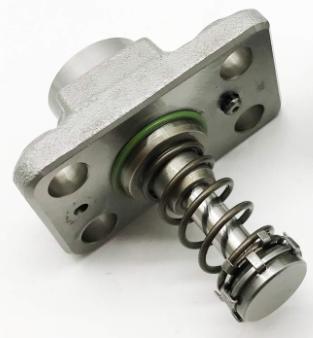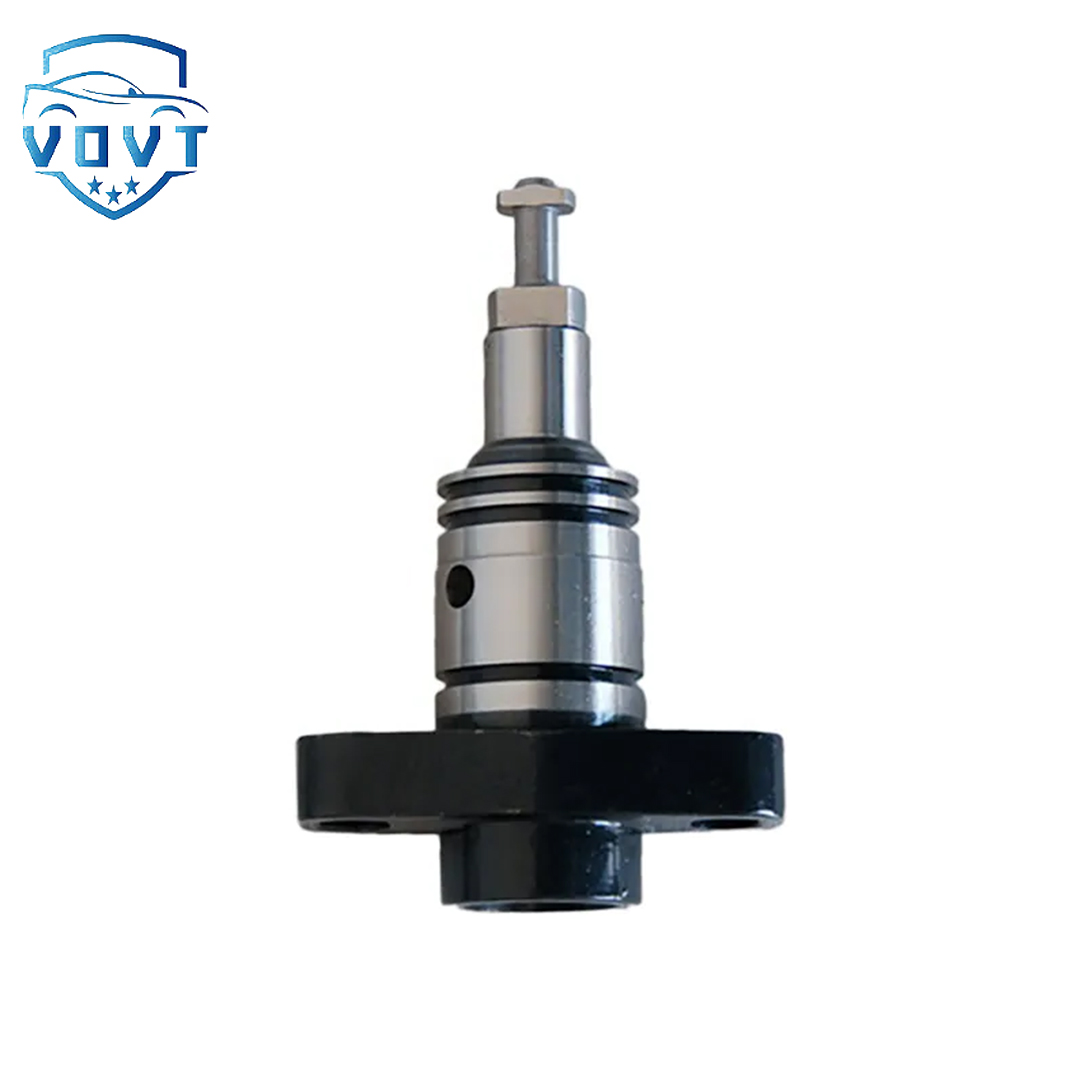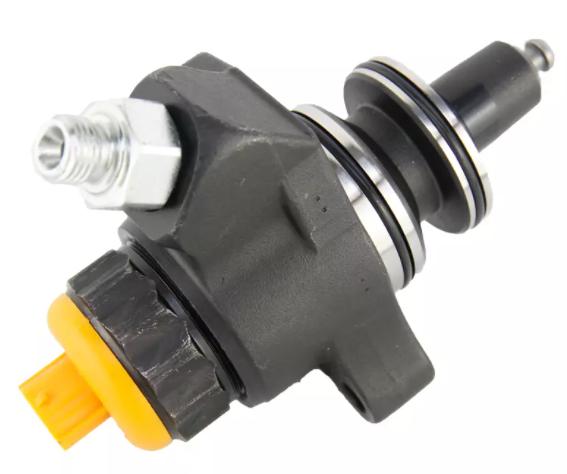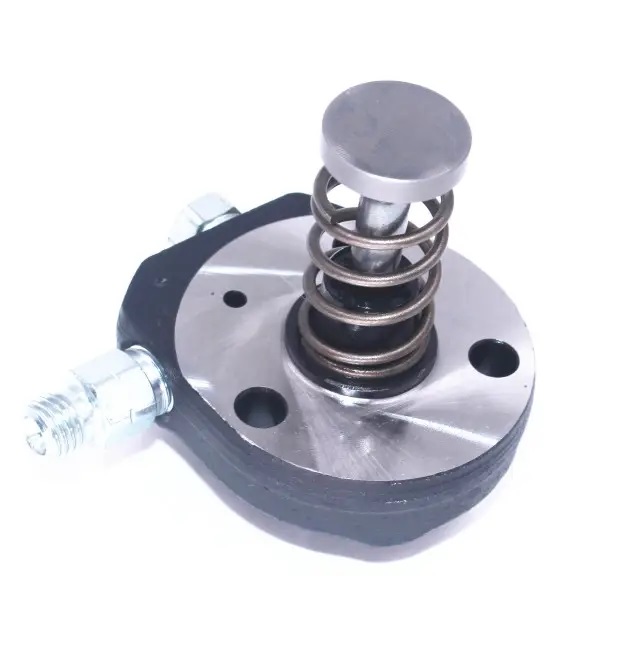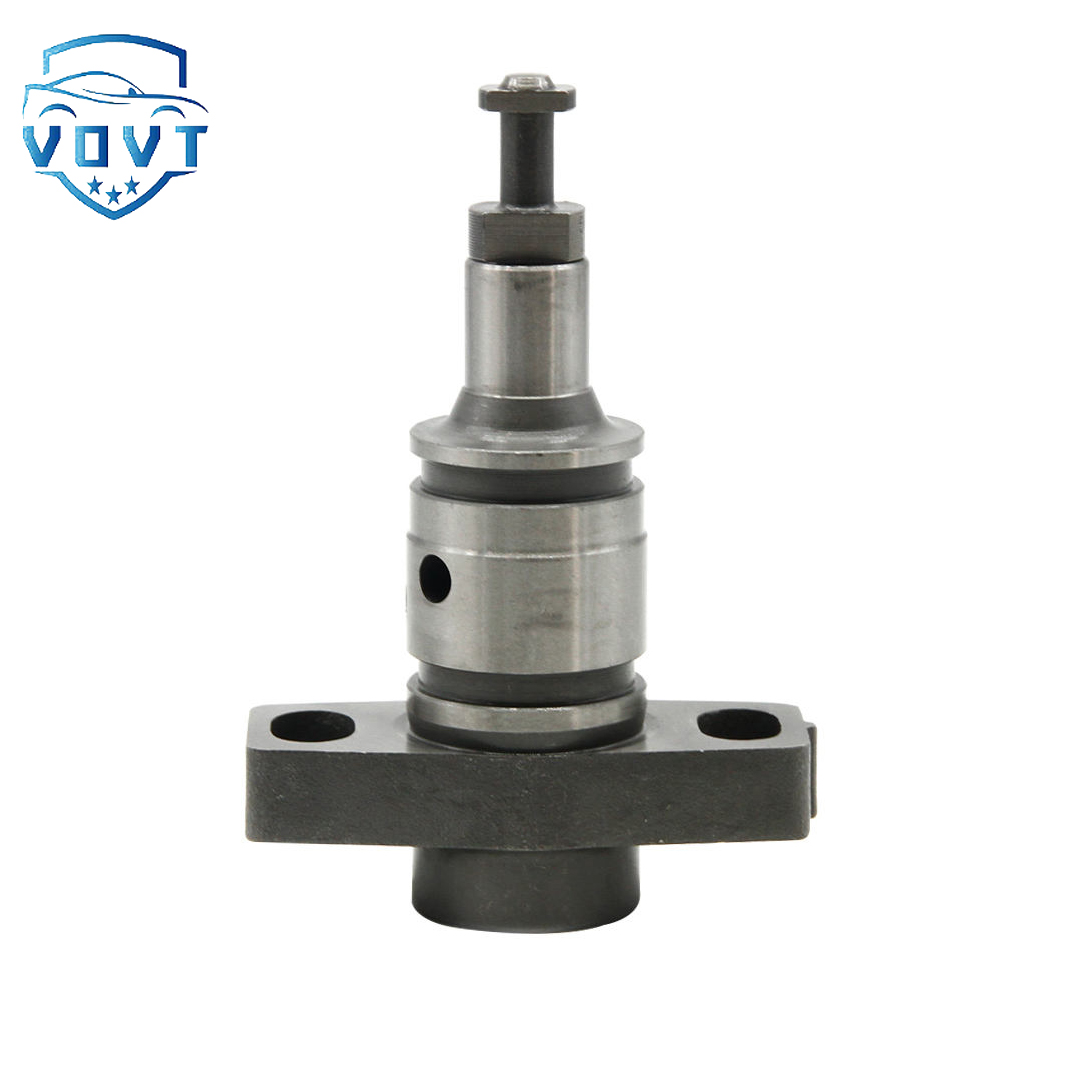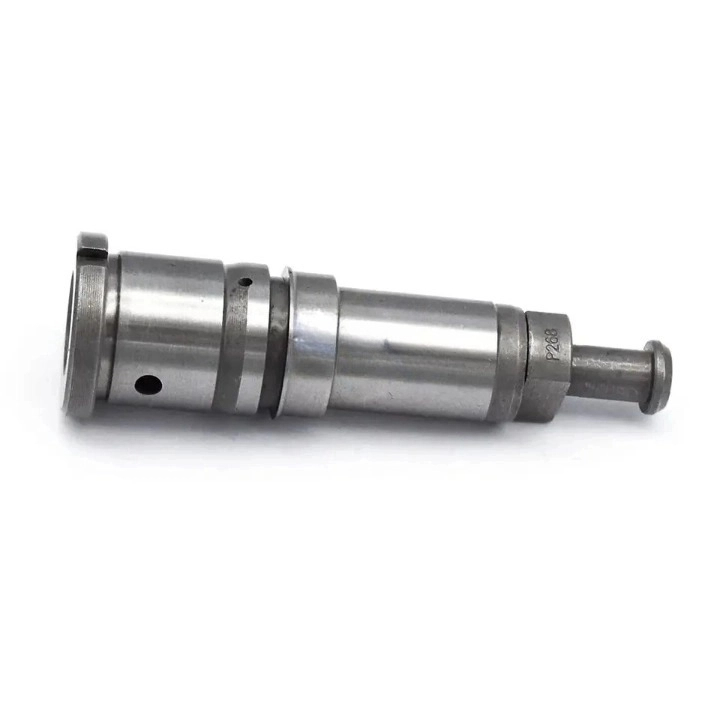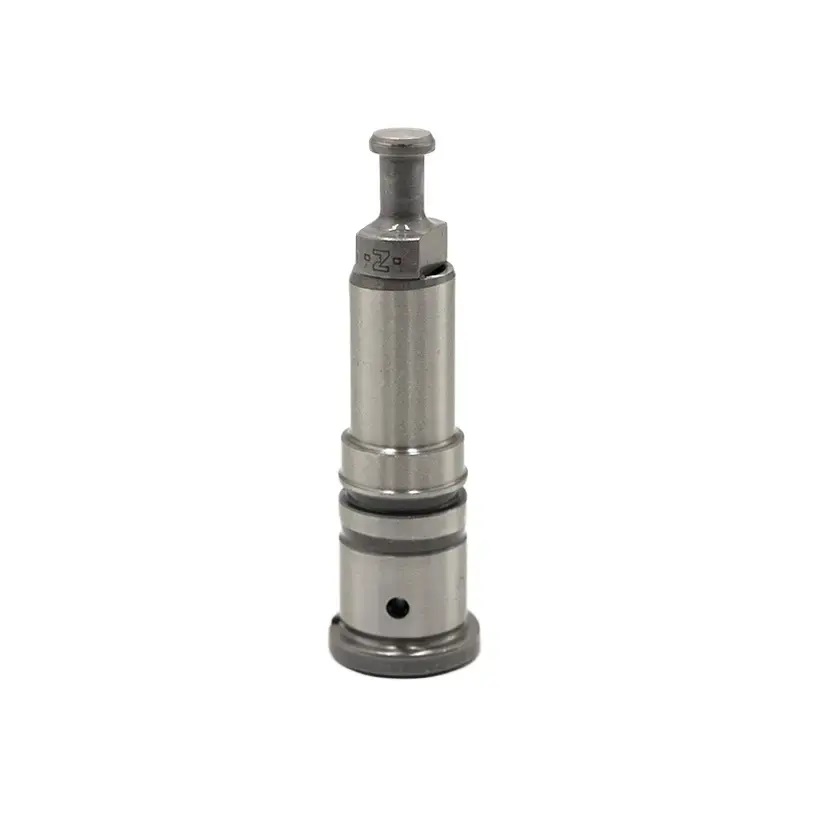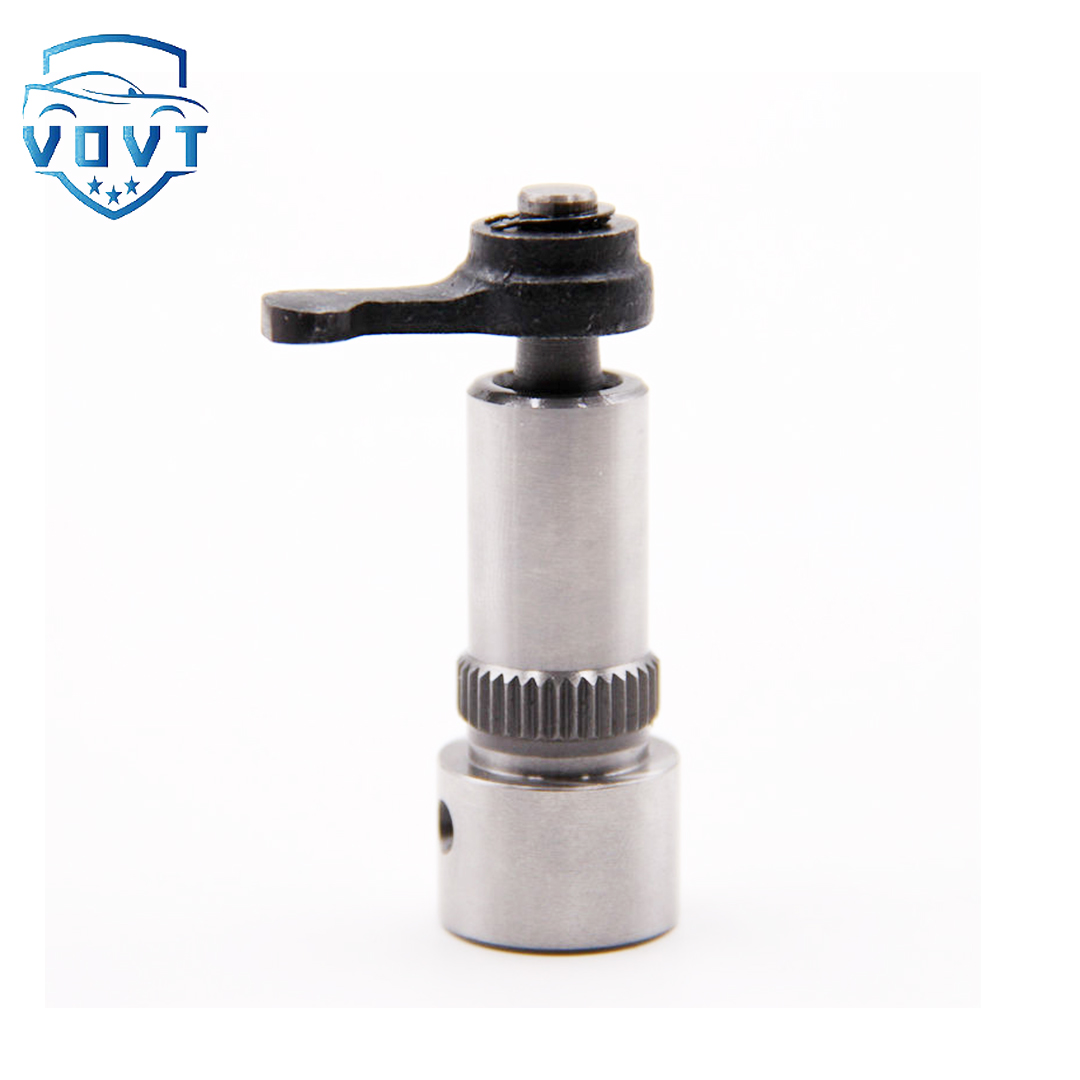Made in China Fuel Injection Pump Plunger 535 Pump Elements Engine Accessories
products description
| Reference. Codes | 535 |
| OE/OEM Codes | / |
| Application | / |
| MOQ | 5 PCS |
| Certification | ISO9001 |
| Place of Origin | China |
| Packaging | Neutral packing |
| Quality Control | 100% tested before shipment |
| Lead time | 7~15 working days |
| Payment | T/T, Paypal, Western Union or as your requirement |
Research on key technologies, applications and development trends of plungers
As a core component in numerous mechanical devices, plungers play an irreplaceable role in processes such as energy conversion, fluid delivery, and precision control. This article deeply analyzes the plunger's operating principle, structural design, and manufacturing processes, along with key technologies. It details its applications in typical equipment such as hydraulic pumps, fuel injection systems, and plunger pumps. Drawing on practical examples, this article analyzes its performance and challenges, and offers a perspective on future trends in plunger technology in areas such as material innovation, precision manufacturing, and intelligent monitoring. This article aims to provide comprehensive theoretical support and practical references for technological research and development, equipment optimization, and industrial upgrading in related fields.
I. Introduction
In modern industrial systems, plungers, due to their unique structure and operating mode, are widely used in various types of mechanical equipment, from large-scale construction machinery to precision medical devices, from aerospace power systems to automotive engines. Through reciprocating linear motion, plungers achieve the suction, compression, and discharge of fluids, precisely controlling fluid pressure, flow rate, and delivery direction. Their performance directly impacts the operating efficiency, stability, and reliability of the equipment. As the manufacturing industry moves toward high-end, intelligent, and green manufacturing, performance requirements for plungers continue to rise. In-depth research on plunger-related technologies and optimizing their design and application are crucial for promoting technological advancement across various industries.
II. Plunger Working Principle and Structural Types
2.1 Working Principle
A plunger typically performs reciprocating linear motion within a specific cavity to achieve different functions. In a hydraulic pump, a motor drives the crankshaft, which, through a connecting rod, converts this rotational motion into reciprocating linear motion for the plunger. When the plunger moves outward, the pump chamber volume increases, pressure decreases, and fluid flows into the pump chamber under the influence of external atmospheric pressure or other pressure sources. When the plunger moves inward, the pump chamber volume decreases, compressing the fluid and increasing its pressure, allowing it to be delivered to the desired location. In a fuel injection system, the plunger, driven by a high-pressure oil pump, compresses the fuel to extremely high pressure, spraying it into the engine combustion chamber in a precise atomized form through the injector nozzle for efficient combustion.
2.2 Structural Types
2.2.1 Classification by Application
Hydraulic plungers are commonly found in hydraulic system components such as hydraulic pumps and cylinders. Generally, it consists of a plunger rod and a plunger head. The plunger rod is typically made of high-strength alloy steel to withstand large axial forces. The plunger head, which contacts the inner wall of the pump chamber or hydraulic cylinder, requires excellent wear resistance and sealing properties. Surface hardening or the installation of sealing rings are often employed. For example, in the hydraulic systems of construction machinery, hydraulic plungers must operate under high pressure and high loads. Therefore, their structural design must fully consider strength, wear resistance, and sealing properties to ensure stable system operation.
Fuel injection plungers: Primarily used in engine fuel injection systems. Their structure is more sophisticated, requiring extremely high dimensional accuracy and surface finish. The plunger and plunger sleeve form a precision mating component, with an extremely small clearance, typically in the micron range, to ensure a tight seal and accurate metering of fuel under high pressure. For example, the plunger in a diesel engine's high-pressure common rail fuel injection system improves engine performance and fuel economy by precisely controlling the amount and timing of fuel injection.
Metering plungers: Commonly used in metering pumps in the chemical and pharmaceutical industries, they precisely deliver a specific amount of fluid. Their structural design focuses on precise flow control and is often equipped with high-precision adjustment mechanisms, such as adjustable stroke devices, to precisely control fluid delivery by varying the reciprocating stroke of the plunger.
2.2.2 Classification by Structural Form
Solid plungers: These have a simple structure, with the entire plunger being solid. This provides high strength and rigidity, making them suitable for applications subject to high pressures and loads, such as the plungers in large hydraulic presses. However, solid plungers are relatively heavy, and during high-speed reciprocating motion, they experience significant inertia, which may affect the equipment's response speed and operational stability.
Hollow plungers: To reduce weight and inertia, some plungers are designed with a hollow structure. While maintaining a certain level of strength, hollow plungers can effectively increase equipment speed and efficiency. They are often used in equipment requiring high response speed, such as certain high-speed hydraulic pumps. Furthermore, the hollow structure can be used to accommodate cooling channels or other functional components, further enhancing plunger performance.
Combined plungers: These are composed of multiple components, such as a plunger rod and plunger head made of different materials and assembled together. This structure fully leverages the advantages of different materials. The plunger rod is made of high-strength material to ensure load-bearing capacity, while the plunger head is constructed of wear-resistant and corrosion-resistant materials to enhance service life and sealing performance. In plunger pumps in the petrochemical industry, modular plungers are widely used to adapt to complex operating environments.
III. Key Plunger Technologies
3.1 Material Selection and Performance Requirements
3.1.1 High-Strength and Wear-Resistant Materials
During operation, plungers are subjected to high-pressure, high-speed friction and impact, requiring materials with high strength and excellent wear resistance. In the hydraulic plunger field, commonly used materials include alloy steels such as 40Cr and 35CrMo. After heat treatment processes such as quenching and tempering, they achieve high hardness and strength, with surface hardness reaching HRC40-50, effectively resisting wear. In fuel injection plungers, due to the more demanding operating environment, specialized alloys such as alloy steels containing elements such as tungsten and molybdenum are often used. These alloys offer increased hardness and wear resistance, meeting the requirements of long-term operation under high-pressure fuel flow. 3.1.2 Corrosion-Resistant Materials
In some specialized applications, such as chemical and marine engineering, plungers come into contact with corrosive media, making corrosion resistance a key factor in material selection. For example, plunger pumps in seawater desalination systems are typically manufactured from corrosion-resistant materials such as stainless steel (such as 316L) or titanium alloys. 316L stainless steel contains molybdenum, enhancing its resistance to chloride ion corrosion. Titanium alloys offer excellent corrosion resistance, maintaining stable performance in harsh chemical environments and preventing corrosion-induced plunger damage and leakage.
3.2 Manufacturing Process and Precision Control
3.2.1 Precision Machining
The manufacturing precision of plungers directly impacts their performance, especially for fuel injection and metering plungers. To achieve high-precision machining, precision machining processes such as CNC grinding and honing are often employed. CNC grinding precisely controls the plunger's outer diameter, achieving dimensional accuracy of ±0.001mm and surface roughness of Ra0.05-0.1μm, ensuring a precise fit between the plunger and the plunger sleeve. Honing further improves the plunger's surface smoothness and cylindricity. The honed surface exhibits a microscopic cross-grained structure, which facilitates lubricant storage, reduces friction, and enhances sealing performance.
3.2.2 Surface Treatment Technology
Surface treatment technology is crucial for improving the plunger's wear resistance, corrosion resistance, and fatigue resistance. Common surface treatment methods include chrome plating, nitriding, and PVD (physical vapor deposition) coating. Chrome plating offers high hardness, excellent wear resistance, and good chemical stability, significantly enhancing the plunger's surface hardness and corrosion resistance. Chrome plating typically has a thickness of 0.02-0.05mm. Nitriding forms an extremely hard nitride layer on the plunger surface, improving surface hardness and fatigue strength. The depth of the nitride layer is typically 0.1-0.5mm. PVD coating deposits a nanoscale hard film on the plunger surface, such as TiN (titanium nitride) or TiAlN (titanium aluminum nitride). These coatings offer high hardness, low friction, and excellent chemical stability, effectively improving the plunger's overall performance.
IV. Application Examples of Plungers in Typical Equipment
4.1 Plunger Applications in Hydraulic Pumps
4.1.1 Axial Piston Pumps
Axial piston pumps are commonly used power components in hydraulic systems, with the plunger playing a core role. For example, in a certain type of axial piston pump for construction machinery, the plunger is manufactured from high-strength alloy steel, precision machined, and surface nitrided. During operation, multiple plungers are evenly distributed along the circumference of the cylinder. As the cylinder rotates, the plungers, driven by the swash plate, perform reciprocating linear motion, achieving oil suction and pressure. This axial piston pump operates at a rated pressure of 35 MPa and a speed of 1800 rpm, delivering a stable output flow rate and exceeding 92% volumetric efficiency. However, during long-term, high-load operation, the friction pairs between the piston, the slipper, the cylinder block, and other components are susceptible to wear, leading to increased leakage and decreased volumetric efficiency. To address this issue, by optimizing the piston surface treatment process and employing PVD coating technology, the friction coefficient was reduced, wear resistance was improved, and the pump's service life was extended by approximately 30%.
4.1.2 Radial Piston Pump
Radial piston pumps feature a compact structure and high output pressure, making them widely used in specialized applications. For example, the radial piston pump in a deep-sea exploration device utilizes a titanium alloy piston to withstand the high-pressure environment of the deep sea. Ultra-precision machining results in submicron dimensional accuracy. At operating depths of 6,000 meters, the pump's piston operates stably in high-pressure, highly corrosive seawater, providing reliable hydraulic power for the equipment. However, due to the complexity of the deep-sea environment, plungers face challenges such as seawater corrosion and high-pressure shock. Regular inspection and maintenance are required, using advanced non-destructive testing techniques such as ultrasonic testing and eddy current testing to promptly detect microcracks and corrosion defects on the plunger surface, ensuring safe and reliable operation of the equipment.
4.2 Application of Plunger in Fuel Injection Systems
4.2.1 Diesel Engine High-Pressure Common Rail System
In a diesel engine's high-pressure common rail system, the plunger is responsible for compressing fuel to extremely high pressure for precise injection. For example, in a heavy-duty truck diesel engine, the plunger and plunger sleeve in its high-pressure fuel pump are manufactured using a high-precision grinding process, achieving a clearance of 3-5μm. During engine operation, the plunger, driven by the camshaft, draws fuel from the low-pressure oil chamber into the high-pressure oil chamber. After multiple compressions, the fuel pressure reaches 180-200 MPa, where it is then sprayed into the combustion chamber through the fuel injector in atomized form. This precise fuel injection control significantly improves engine combustion efficiency, reduces fuel consumption by approximately 10%, and significantly reduces harmful pollutants in exhaust emissions (such as nitrogen oxides and particulate matter). However, with increasingly stringent engine emission standards, the demand for plunger precision and reliability is even higher. Further optimization of the plunger assembly manufacturing process is needed to improve its wear resistance and sealing properties to ensure the stability of fuel injection volume and injection pressure over long-term operation.
4.2.2 Gasoline Engine Direct Injection System
Gasoline engine direct injection systems also rely on plungers for precise fuel injection. In the direct injection system used in a certain high-performance gasoline engine, the plunger is manufactured from a lightweight, high-strength alloy to improve response speed. At high engine speeds, the plunger can complete the fuel intake, compression, and injection processes in a very short time, enabling precise control of fuel injection volume and timing, thereby improving engine performance and fuel economy. In practical applications, by optimizing the plunger's motion curve and control strategy, the engine maintains excellent performance under various operating conditions. For example, under rapid acceleration, the engine's power output responds quickly and torque is significantly increased. Under idling conditions, the fuel injection amount is precisely controlled, resulting in smooth engine operation with minimal vibration.
V. Plunger Technology Development Trends
5.1 Material Innovation and Performance Improvement
With the continuous advancement of materials science, new high-performance materials will continue to emerge and be applied to plunger manufacturing. On the one hand, alloy materials with higher strength, improved wear resistance, and corrosion resistance, such as new high-temperature alloys and nanocomposites, are being developed to meet the plunger's operating requirements under extreme operating conditions. For example, in the fuel injection system of an aircraft engine, the use of new high-temperature alloys to manufacture plungers allows for stable operation in harsh environments of high temperature and high pressure, improving engine reliability and performance. On the other hand, intelligent materials with self-healing and self-lubricating properties are being explored, such as composite materials containing microencapsulated lubricants. When the plunger surface wears, the microcapsules rupture and release lubricant, achieving self-lubrication, reducing friction and wear, and extending the plunger's service life. 5.2 Precision Manufacturing and Quality Control
Precision manufacturing technology will develop towards higher precision and higher efficiency. Ultra-precision machining technologies such as electron beam machining and ion beam machining will gradually be applied to plunger manufacturing, further improving dimensional accuracy and surface quality. Dimensional accuracy is expected to reach the nanometer level, and surface roughness will be reduced to below Ra0.01μm. At the same time, advanced quality control methods, such as AI-based online inspection systems, will be introduced. By collecting and analyzing data during the manufacturing process, the plunger's machining quality will be monitored in real time, allowing for the timely detection and correction of manufacturing defects. This will enable full-process quality traceability and control, improving the consistency and reliability of plunger manufacturing.
5.3 Intelligent Monitoring and Fault Diagnosis
To improve equipment reliability and maintenance efficiency, plungers will develop towards intelligent technology. Sensors will be integrated inside or on the surface of the plunger to monitor its operating status, such as pressure, temperature, and wear, in real time. Wireless transmission will be used to transmit this data to the equipment control system. Big data analytics and AI algorithms will be used to process and analyze the data, enabling early warning and accurate diagnosis of plunger failures. For example, when sensors detect an abnormally high plunger surface temperature or pressure fluctuations outside the normal range, the system can promptly identify possible fault causes, such as increased wear or seal failure, and issue an alarm, prompting maintenance personnel to conduct repairs. This prevents serious equipment damage caused by plunger failure and improves equipment availability and production efficiency.
VI. Conclusion
As a core component of various mechanical equipment, plungers play an important role in industrial production and daily life. Studies of their operating principles, structural types, key technologies, and application cases reveal that rational structural design, high-quality material selection, and advanced manufacturing processes are key to ensuring high plunger performance. As equipment performance requirements continue to rise across various industries, plunger technology will continue to advance in material innovation, precision manufacturing, and intelligent monitoring to meet the demands of complex operating conditions and high-end applications. In the future, further strengthening of basic research and technological innovation is necessary to promote breakthroughs in plunger technology in more areas, providing strong support for technological upgrades and sustainable development across various industries.
















